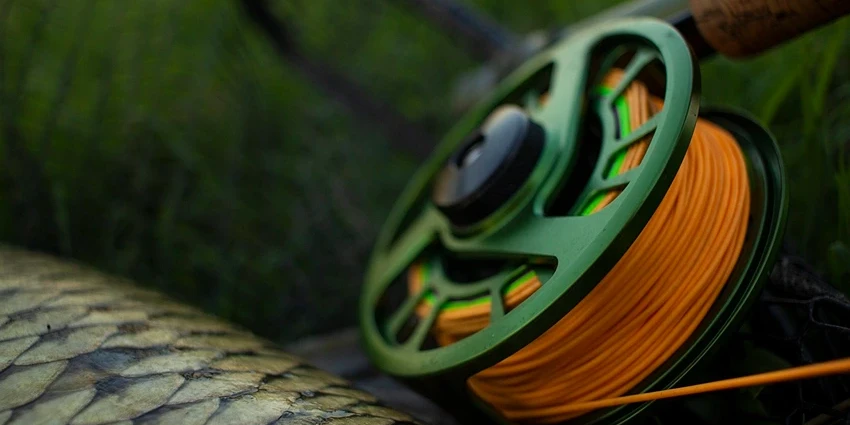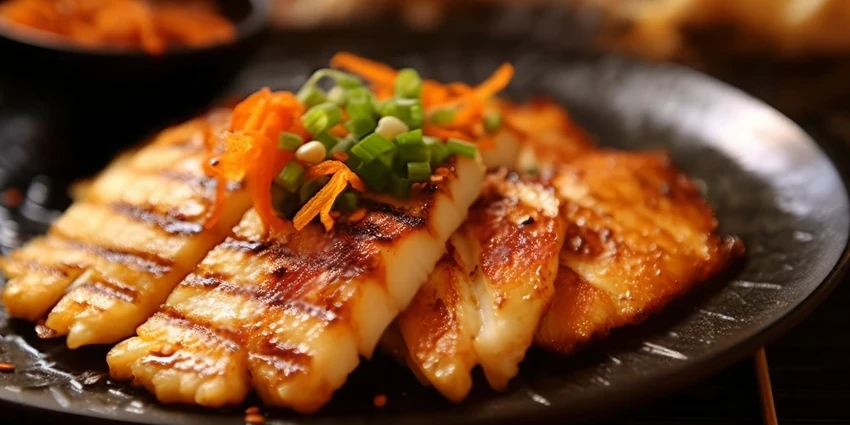All products were chosen independently by our editorial team. This review contains affiliate links and we may receive a commission for purchases made. Please read our affiliates FAQ page to find out more.
Jump to:
Can You Eat a Tarpon?
While it’s technically possible to eat tarpon, it is not commonly done. Tarpon are primarily targeted for sport fishing due to their size and acrobatic nature. Their flesh is not considered palatable, and conservation efforts promote catch-and-release practices to sustain their populations for future angling enjoyment.
Key Takeaways:
- Overview of Tarpon Species: Understanding the biological and ecological aspects of tarpon.
- Tarpon as a Food Source: Historical context and nutritional value.
- Legal and Ethical Considerations: Regulations and conservation status affecting tarpon fishing.
- Preparing Tarpon for Consumption: Challenges and methods in cooking tarpon.
- Alternatives to Eating Tarpon: Sustainable seafood options and responsible fishing practices.
Tarpon, a species revered by anglers for its impressive size and fighting spirit, has long been a subject of curiosity in the culinary world. This article delves into various aspects of tarpon, from its historical use as a food source to modern-day ethical and legal considerations.
Introduction to Tarpon
Overview of Tarpon Species
The tarpon, scientifically known as Megalops atlanticus, is a large, migratory fish predominantly found in the Atlantic Ocean. Known for their silver scales and spectacular aerial acrobatics, tarpon can grow up to 8 feet in length and weigh over 280 pounds. Their primary habitats include coastal waters, estuaries, lagoons, and rivers.
Table 1: Tarpon Species Facts
| Feature | Description |
| Size | Up to 8 feet |
| Weight | Up to 280 pounds |
| Habitat | Coastal waters, estuaries, lagoons, rivers |
| Diet | Primarily fish and crustaceans |
| Lifespan | Up to 50 years |
Significance in Recreational Fishing
Tarpon are highly sought after in the sport fishing community due to their size and strength, offering a challenging and rewarding experience for anglers. Their tendency to leap out of the water when hooked adds to the thrill and spectacle of tarpon fishing. However, they are mostly caught for sport, as their tough, bony flesh is not commonly considered desirable for eating.
Table 2: Recreational Fishing Statistics
| Aspect | Detail |
| Popular Locations | Florida Keys, Gulf of Mexico, West African Coast |
| Fishing Techniques | Fly fishing, live baiting |
| Catch and Release | Highly encouraged due to conservation efforts |
Tarpon as a Food Source
Historical Context of Eating Tarpon
Historically, tarpon were consumed by indigenous communities and early settlers in regions where they were abundant. The meat, described as tough and bony, was often smoked or salted for preservation. However, with the advent of modern refrigeration and the availability of more palatable fish species, tarpon gradually fell out of favor as a food source.
Nutritional Value of Tarpon Meat
While not commonly consumed, tarpon meat is known to be high in protein and low in fat. However, its tough texture and strong flavor make it less appealing compared to other seafood options. Additionally, tarpon are known to accumulate toxins like mercury in their bodies, which can pose health risks when consumed in large quantities.
Table 3: Nutritional Comparison of Tarpon to Other Fish
| Fish Species | Protein (per 100g) | Fat (per 100g) |
| Tarpon | High | Low |
| Salmon | High | Moderate |
| Tuna | High | Low |
Legal and Ethical Considerations
Fishing Regulations for Tarpon
Tarpon fishing is regulated in many areas to ensure the species’ sustainability. In places like Florida, tarpon are designated as a catch-and-release-only species, with strict regulations on handling and release methods to minimize harm. Anglers are often required to use circle hooks and are prohibited from removing large tarpon from the water.
Table 4: Tarpon Fishing Regulations
| Location | Regulation |
| Florida | Catch-and-release only |
| Caribbean | Size and bag limits |
| West Africa | Limited commercial fishing |
Conservation Status and Ethical Fishing Practices
The tarpon is not currently listed as an endangered species, but it faces threats from habitat loss, water pollution, and overfishing in certain regions. Ethical fishing practices, including catch and release, proper handling, and adherence to local regulations, are crucial in preserving tarpon populations for future generations.
Preparing Tarpon for Consumption
Challenges in Cooking Tarpon Meat
Cooking tarpon presents unique challenges due to its tough, bony nature. The meat, known for its firm texture, requires specific preparation methods to enhance its palatability. Traditional methods often involve slow cooking techniques like smoking or stewing to tenderize the flesh.
Popular Recipes and Cooking Methods
While not a common choice for culinary experiments, some cultures have developed recipes that make the best use of tarpon’s unique texture. These include smoked tarpon dip, tarpon stew, and grilled tarpon steaks, often marinated to add flavor and tenderness.
Table 5: Cooking Methods for Tarpon
| Method | Description |
| Smoking | Imparts a rich flavor, tenderizes meat |
| Stewing | Softens tough flesh, enhances flavor |
| Grilling | Requires marination for tenderness |
Alternatives to Eating Tarpon
Sustainable Seafood Options
Considering the ethical and conservation concerns, as well as the culinary limitations of tarpon, exploring sustainable seafood alternatives is advisable. Options like salmon, trout, and mackerel offer not only better taste and texture but also align with responsible fishing practices.
Promoting Responsible Fishing Habits
Anglers and consumers can contribute to marine conservation by choosing seafood from sustainable sources, adhering to catch-and-release practices, and staying informed about the conservation status of various species.
Table 6: Sustainable Seafood Alternatives to Tarpon
| Fish Species | Reasons for Sustainability |
| Salmon | Well-managed fisheries, healthy stocks |
| Trout | Often farm-raised, reducing wild stock pressure |
| Mackerel | Abundant, fast-growing species |
Register for our latest in-depth reviews and product round-ups from the experts
Enter your email address below to receive our twice monthly reviews emails.
By entering your details, you are agreeing to our terms and conditions and privacy policy. You can unsubscribe at any time.
FAQs About Eating Tarpon
While tarpon can be consumed, it’s not commonly eaten due to its tough texture and potential mercury content. If consumed, it should be in moderation.
Tarpon is rarely eaten because of its bony, tough flesh and strong flavor. Additionally, ethical and conservation considerations make it a less desirable choice.
Proper handling for catch and release includes using circle hooks, avoiding removing the fish from the water, and minimizing handling time to ensure the fish’s survival post-release.
Martin Cochran, renowned for his expertise in deep-sea fishing and marine wildlife, plays a pivotal role at Fresh Catch Daily. His adventures across various oceans have equipped him with unique insights and techniques, enriching our platform with diverse and engaging content for fishing enthusiasts.










